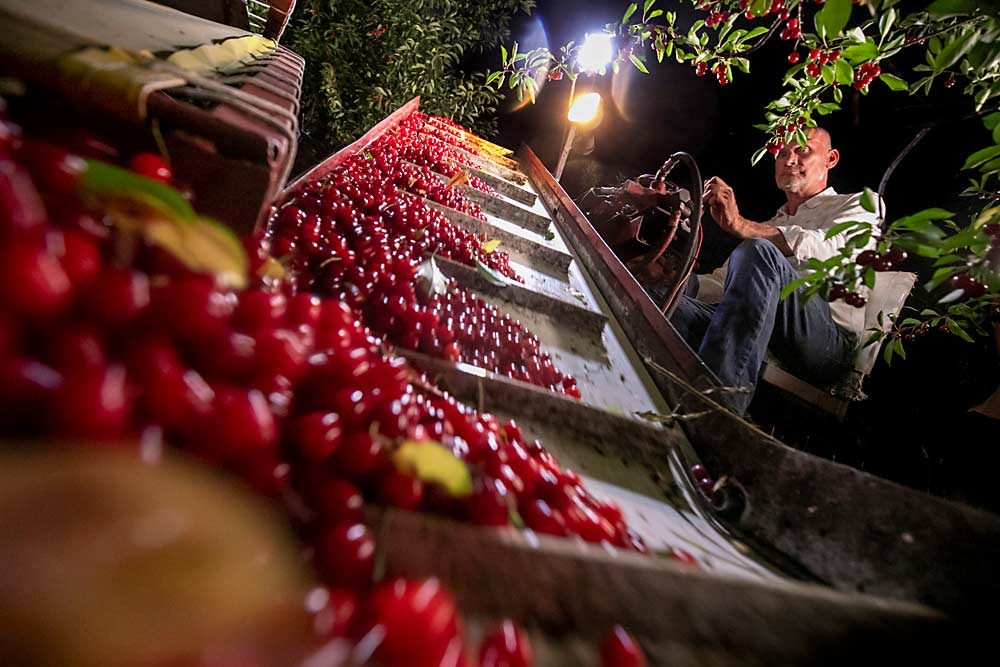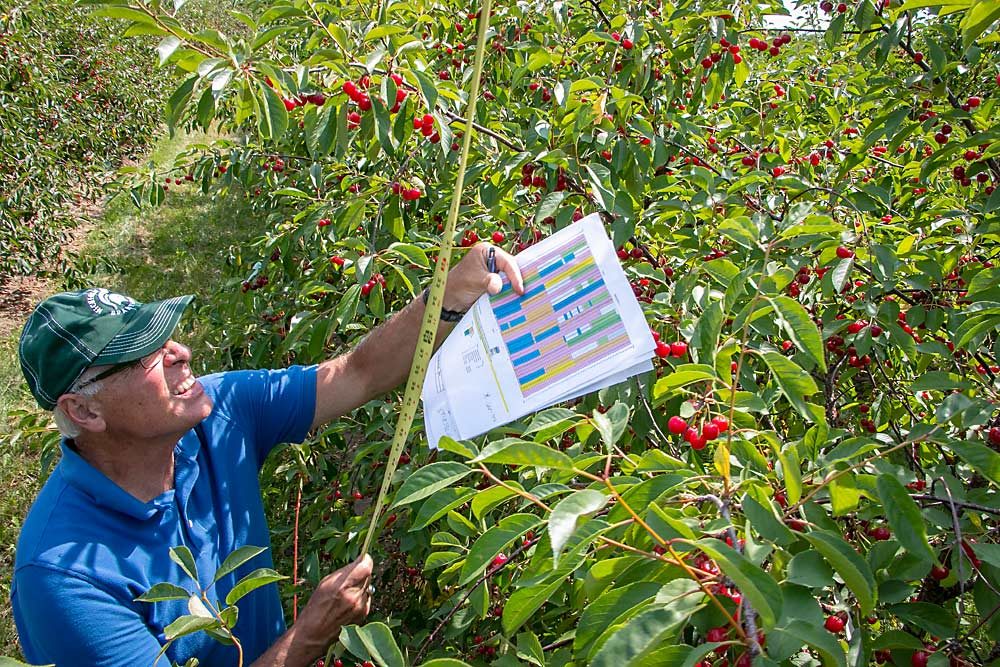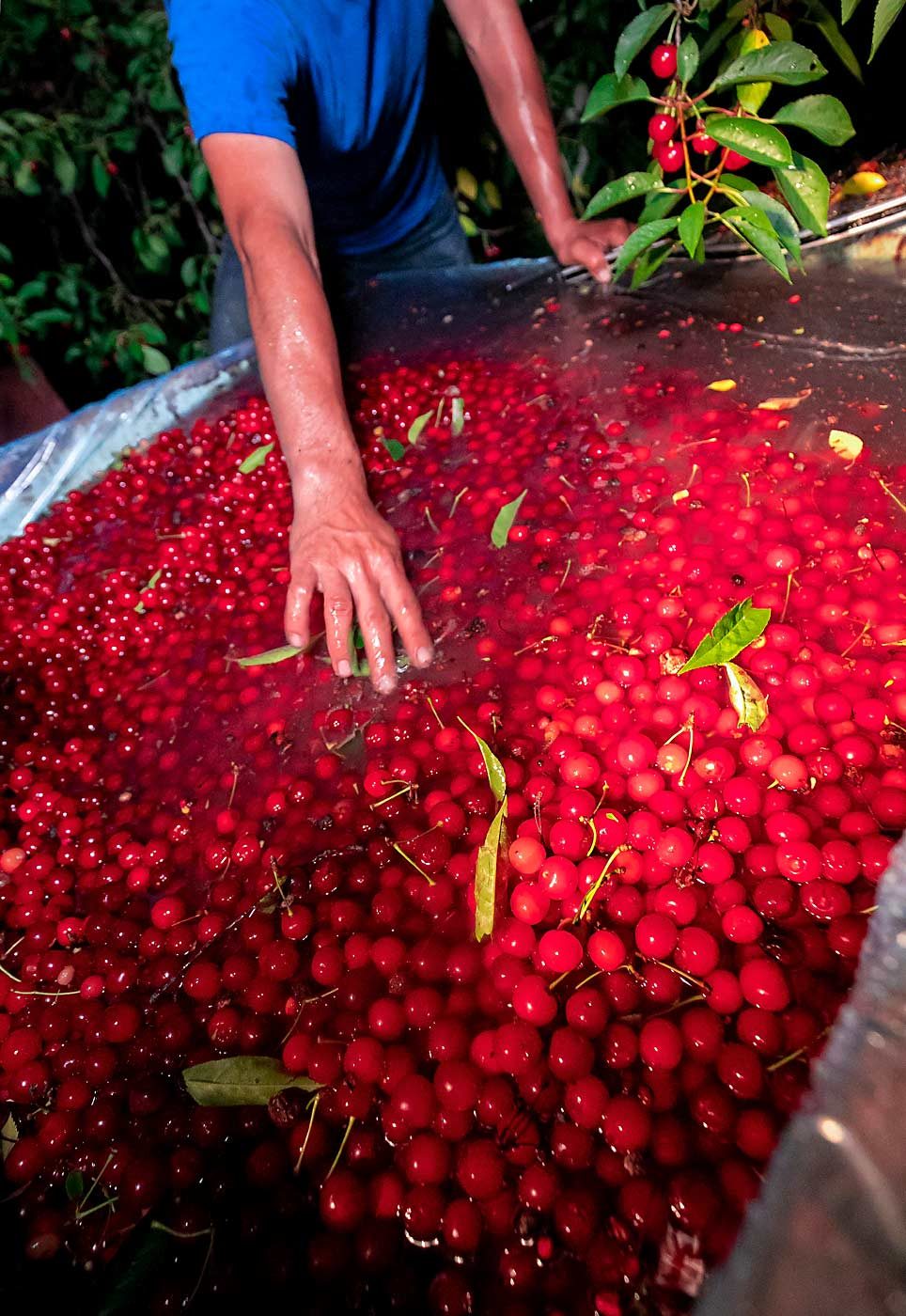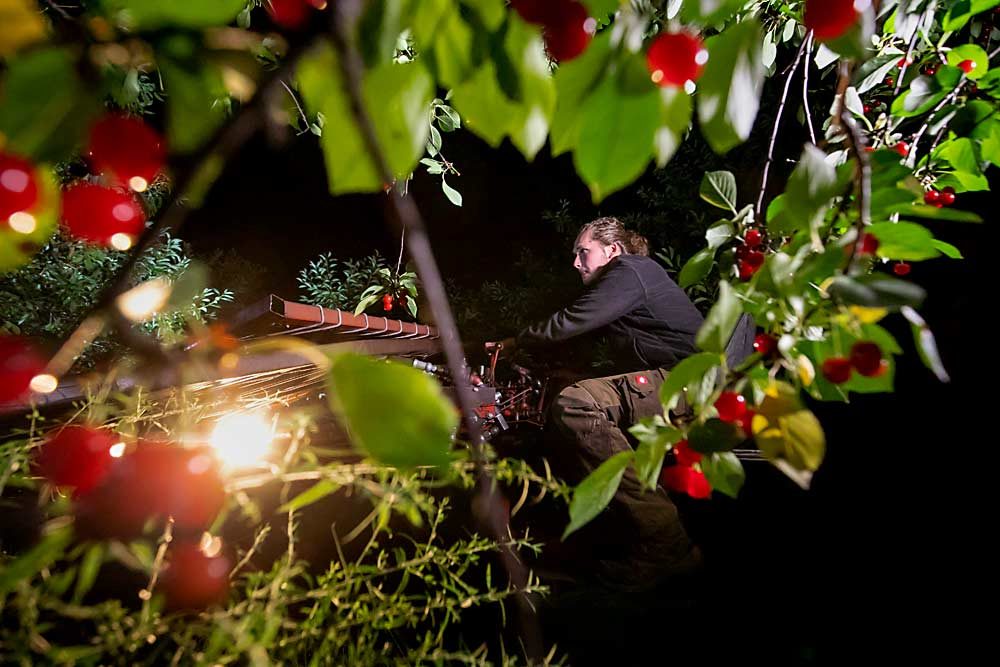
Four years ago, when Phil Korson made the decision to retire by 2020, the president of the Cherry Marketing Institute didn’t anticipate that his industry would be in dire straits at the time he stepped down. U.S. tart cherries have always had their ups and downs, but two threats in particular — spotted wing drosophila and Turkish imports — have combined in the past few years to squeeze producers from both ends.

“The two in tandem have been really tough,” Korson said. “Trade is driving down prices and SWD is driving up costs.”
But as someone who’s been working with tart cherries for four decades, Korson has seen worse. He’s confident that the industry will come together and find ways to solve its problems.
“In 1995, we had 5-cent cherries,” he said. “That was pretty bleak.”
The tart cherry industry survived the crisis of the mid-’90s by creating a new marketing order, which boosted prices. So, when asked about recent media reports once again predicting the industry’s demise, Korson laughed heartily. He’s heard it before.
“It’s a bump in the road,” he said. “If I had my druthers, I would like to have left the industry with those two issues (SWD and Turkish imports) solved, but all I can do is do the best I can to position the industry to deal with it, as the next set of leaders comes along.”
Imports aren’t driving down prices alone. The U.S. industry has had a four- or five-year run of strong production and is carrying more inventory than usual. And though the 2019 crop (257 million pounds) was down slightly from the previous two years, the large carryover is contributing to poor pricing, said Mollie Woods, executive director of the Cherry Industry Administrative Board.
Growers, processors and industry leaders agree that the tart cherry industry will survive the current quandary but not look the same on the other side of it. Fewer growers — the larger, more vertically integrated operations surviving while the smaller operations pull out — will likely reduce production and new markets that command better prices will probably be the order of the day.
‘Perfect storm’
If the tart cherry industry has a home, it’s Northwest Michigan. Michigan produces more than two-thirds of U.S. tart cherries; roughly two-thirds of the Michigan crop comes from the region surrounding Traverse City, still known as the “Cherry Capital of the World.”

A “perfect storm” of SWD, cheap imports, oversupply, climate change and other factors has pushed some growers in the region to rethink their reliance on tart cherries, said Nikki Rothwell, a Michigan State University Extension educator and coordinator of the Northwest Michigan Horticulture Research Center.
“SWD has really thrown us for a loop,” she said. “Input costs have gone up like crazy.”
When the invasive pest first arrived in Northwest Michigan in 2014, there wasn’t cause for immediate alarm. SWD, which lays its eggs in thin-skinned fruit, emerged late in the season, after the cherries were safely harvested. But it started emerging earlier and earlier, finally disrupting harvest itself. By 2017, SWD was wreaking havoc in the region’s cherry orchards. The industry has poured more than a million dollars into research but hasn’t yet found an effective way to stop the pest, Korson said.
Since 2016, SWD has caused annual crop losses of at least 20 percent for the region’s growers. Until a more effective solution is found, the best thing they can do to reduce infestation is to open up tree canopies for better light penetration and to reduce relative humidity, Rothwell said.
Grower Bob Gregory has his own theories: He recommends wider borders between orchards and woodlots and avoiding sites that don’t have significant air movement. SWD pressure, which was particularly intense in 2019, has caused Gregory’s family farm to abandon some of its orchards in Northwest Michigan.
Gregory, co-owner of Cherry Bay Orchards northwest of Traverse City, has seen a lot of ups and downs in his 48 seasons harvesting tart cherries, but called the current downturn the worst he’s experienced.
Cherry Bay grows about 1,400 acres of tart cherries but has pulled out more than 200 acres since 2018. The owners decided to immediately pull any trees that were due to come out within the next three years. Gregory said other growers were likely to make similar decisions, and some might decide to get out of tart cherries altogether.

The latest U.S. Department of Agriculture statistics don’t yet show the reduction in acreage many say is needed — and that is already underway.
Gregory said another major factor affecting the industry is changing dietary habits. Frozen fruit and pie filling have been Cherry Bay’s most consistent sales categories over the years, but juice concentrate and dried fruit are growing more and more important.
With a continued emphasis on research, promotion and creating new markets, Gregory expects the tart cherry industry to recover. But it’s not going to be easy.
“Going through this downturn is kind of like going through a major health crisis: You end up taking treatment, and sometimes the treatment is pretty painful, but you come out the other side in a better state,” he said. “We’re getting a pretty harsh treatment right now, but hopefully we will recover from it.”
Coming up with new products to meet changing consumer tastes is essential, Korson said, citing new interest in cherry powders and pastes. “Consumers are looking for products that are good for them,” he said. “We need packaging and products that fit that expectation.”
Planning to survive
In the region surrounding Wolcott, New York, not far from Lake Ontario, many growers are ripping out their tart cherry trees. The region is down to one buyer for the crop. Prices, dictated by Michigan, have been weak the past few years. But the Abendroth family has decided to take its chances with the fruit.
Robert Abendroth and his grown children, Alicia and Alec, have been growing 25 acres of tart cherries since they bought a fruit farm, now called Abendroth’s Apple Ridge Orchard, five years ago. The trees were at least 20 years old when they acquired them, mostly Montmorency with a handful of Balaton, along with a decades-old mechanical shaker.

“Tart cherries were new to us,” Robert Abendroth said. “We didn’t understand them. We didn’t understand the shaker, either.”
It didn’t take them long to learn that, though tart cherries are “a massive amount of work,” they are not a profitable crop. At least, not right now. They made 15 cents a pound in 2019.
“That’s not really a number,” Abendroth said. “At 25 cents a pound, we would feel like we were shaking for a reason.”
But despite struggling with shaker breakdowns and sleepless harvest nights, the Abendroths plan to stick with tart cherries. The crop is one leg of their multilegged diversification strategy, and though tarts are not paying as well as the family would like, creative marketing strategies — such as selling some fruit at farm markets for fresh consumption — could solve that problem in the long run.
In Utah, the No. 2 tart cherry-producing state, growers also are feeling pressure from changing markets, foreign trade and SWD — though SWD isn’t hitting the state nearly as bad as it’s hitting Michigan. The Western state’s higher elevation and lack of wooded areas help manage the pest, said Ray Rowley, one of the owners of Cherry Hill Farms, a large family fruit farm in Santaquin, Utah.
“The cherry industry is going to go through a huge hiccup before this all settles out,” Rowley said. “But we don’t believe it’s the end, or we wouldn’t be planting cherries.”
In Norfolk County, Ontario, Schuyler Farm, which co-owns the region’s only packing house, is planting new blocks as well. When the International Fruit Tree Association visited in July, co-owner Marshall Schuyler said, “We believe cherries are as good a bet as anything in the long term, but in the short term, it’s going to be ugly.”
Rowley said that as low prices continue to drive out some production, those who want to weather the storm must get creative and find new markets.
“There’s a future in the cherry market, but that future, in my mind, is outside the traditional 5+1 (five pounds of cherries and one pound of sugar) market,” Rowley said. “I have hope that this industry will turn around sometime in the future, but I know it will not look the same as it does today. I plan on our farm being part of that future.” •
—by Matt Milkovich
Gordon to succeed Korson
The Cherry Marketing Institute’s board of directors named Julie Gordon to succeed Phil Korson as president of the nonprofit organization. Korson is set to retire Jan. 1, after working at CMI for more than 30 years.
CMI is tasked with increasing demand for U.S. Montmorency tart cherries. Gordon has worked at CMI for 19 years, serving as its export marketing director and chief financial officer. She led the expansion of the tart cherry export program into China and South Korea, while maintaining programs in the United Kingdom and Germany.
—M. Milkovich
Related:
—Easing tart cherry trade troubles
—Commerce Department rules in favor of U.S. tart cherry producers
—Tart growers target Turkey
—The art of tart






Leave A Comment